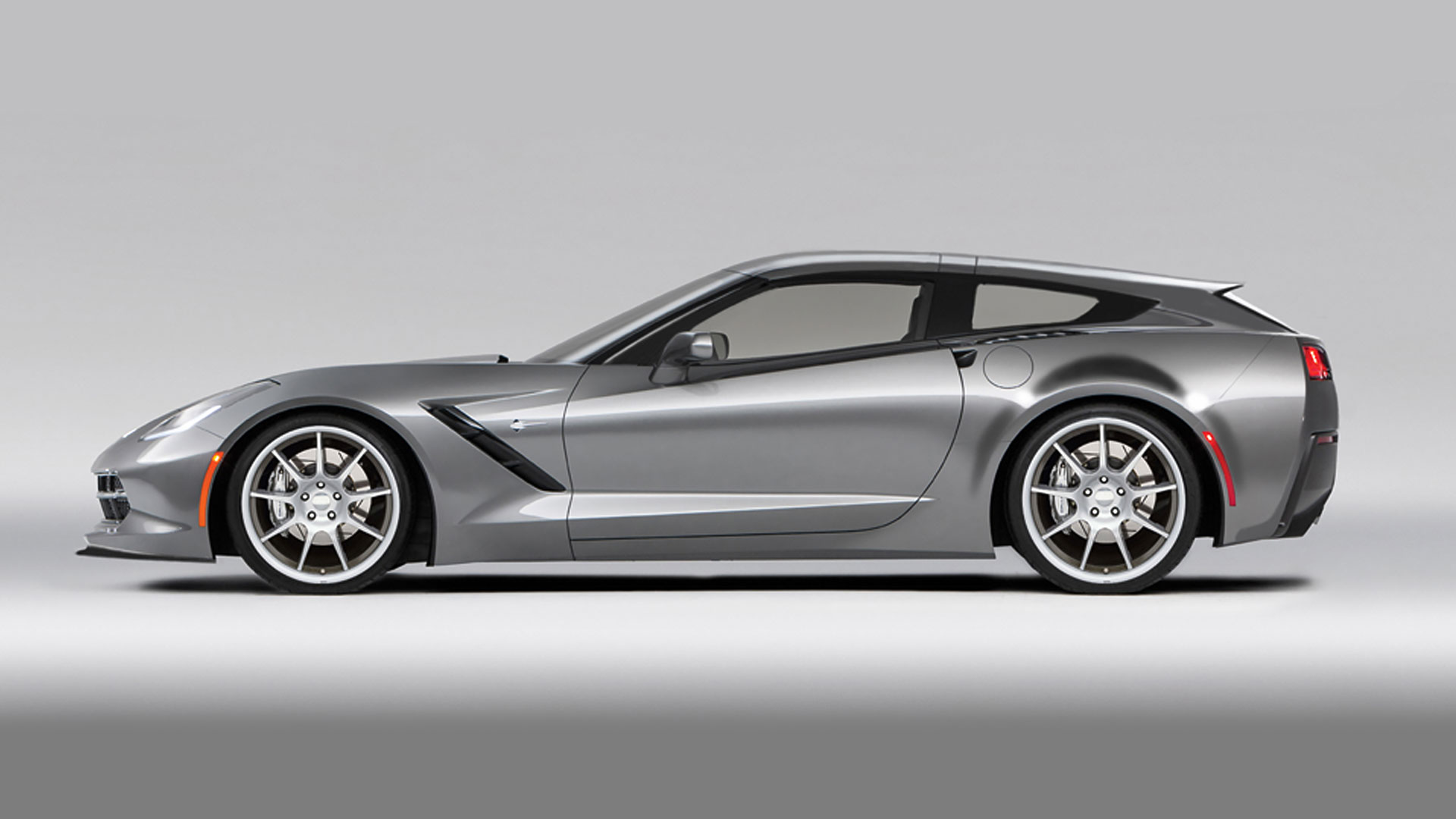

We may earn revenue from the products available on this page and participate in affiliate programs. Learn more ›
Callaway Cars has been kicking around plans for a shooting brake version of the seventh-generation Corvette almost as long as there’s been a seventh-generation Corvette. Production was originally slated to begin back in 2014, but since then, the plans have been repeatedly kicked down the road so the company could concentrate on projects like Hellcat-slaying Camaros. But it seems plans for the shooting brake version of the C7 ‘Vette are back on track, because the Connecticut-based tuner has just announced they’ll be delivering Corvette Stingray and Z06 wagons to owners by the end of 2016.
The AeroWagen Package, as it’s obnoxiously spelled, is actually a lot less complex than it might seem at first glance. It’s basically a new hatch that replaces the factory’s expansive, sloping glass with a flat carbon-fiber top and an embrasure for a rear window. The Callaway AeroWagen keeps the OEM seal, hinge, and latch mechanisms, allowing owners to swap the original hatch back on with ease if they grow tired of the wagon-like lines.
Going back to the original opening, though, will mean giving up the extra cargo capacity that’ll come with the shooting brake conversion. (Callaway says it hasn’t calculated how much additional space the new hatch will add, but says “based on the projected geometry, it would be significant.”)
Other than the difference to the cargo bay, the Callaway AeroWagen is effectively unchanged in comparison with the regular Corvette Stingray. Callaway says it expects the coefficient of drag to be slightly reduced, so the AeroWagen might pick up a couple miles an hour in the quarter-mile versus comparable normal-looking Corvettes. Otherwise, though, expect the same performance as you would from any other 455-horsepower Stingray or 650-horsepower Z06. (If you like, however, Callaway will be happy to upsell you on one of their many Corvette power upgrade packages.)
Final pricing hasn’t been announced yet, but initial reports back in 2013 suggested the conversion would cost around $15,000. Whatever the final base price may be, that stack of cash will buy a trunk lid in its native, unpainted carbon fiber. Painting it, of course, costs extra.
